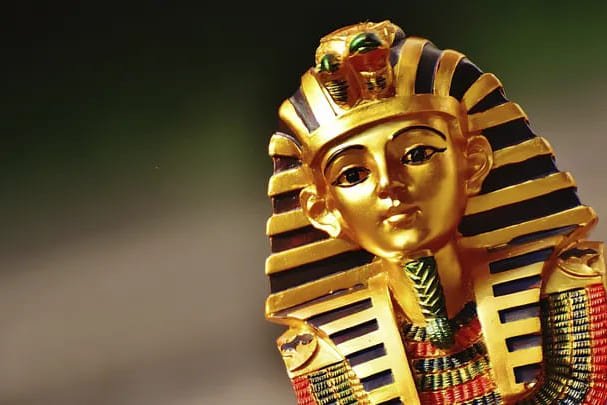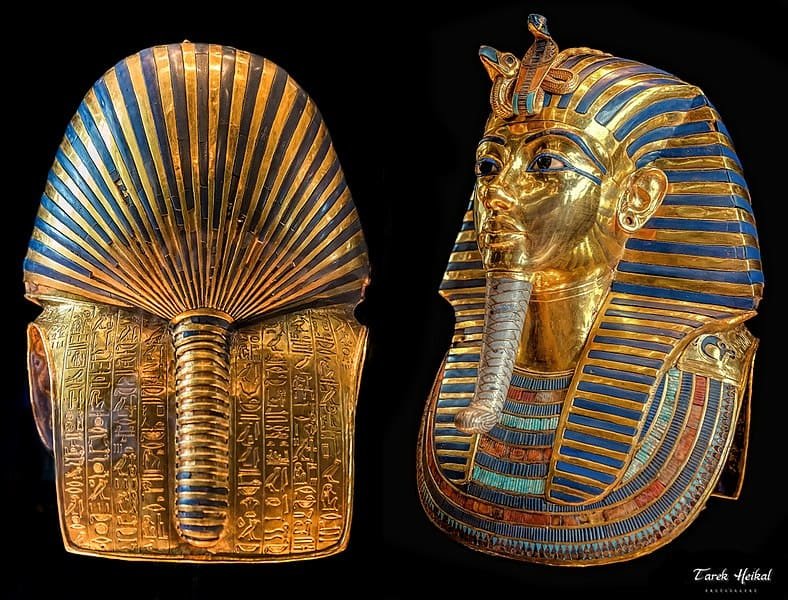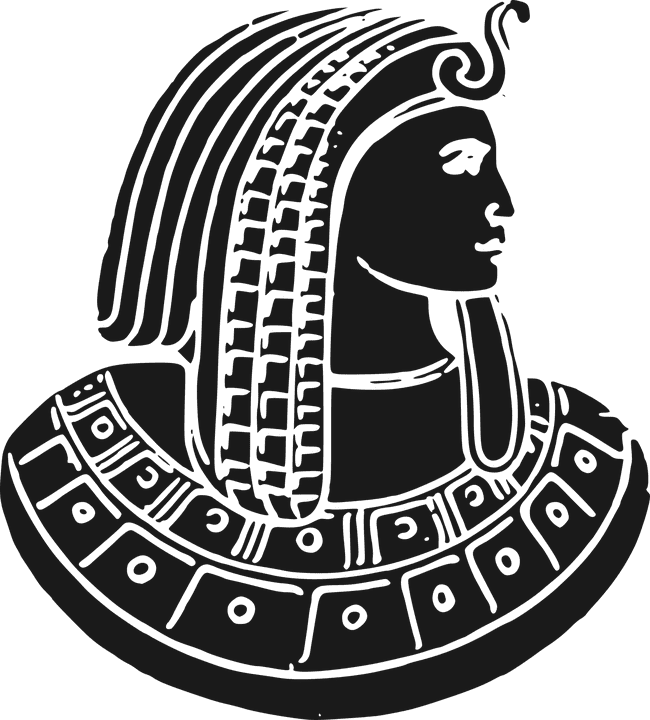Ancient Egypt is full of mystery and symbolism that we still decipher today. And king Tutankhamun is definitely one of the most notorious figures from Egyptian history.
Tutankhamun lived between c. 1341 BC and c. 1323 BC, at the end of the Eighteenth Dynasty of Ancient Egypt. While his impact on the Egyptian religion and his being treated as a deity during his life might come as no surprise for history lovers, his head crown raises many questions and confusion.
So, what does King Tut’s headpiece symbolize? Did Tutankhamun’s headdress (mask) change or Is it the Mandela effect? What are the various false memories people remember about King Tut’s crown? Well, let’s find out..
What are the various memories people remember about the creatures on King Tut’s crown?
The head crown worn by pharaohs is known as the Nemes, and king Tut also had his own Nemes. Most Nemes crowns had a cobra, Uraeus, depicted right in the middle. The cobra symbolizes goddess Wadjet who offered guidance and protection to the royal figures. But did king Tut have a cobra Nemes or a cobra and a bird nemes? This confusion still exists today..

Most people remember pictures of king Tutankhamun with a headdress Nemes that shows a single cobra in the middle, standing right in the mid-section of the king’s forehead. There is no other animal symbol on his crown, as most pharaohs only had the cobra.
On the other hand, some people remember king Tut having the legendary cobra and a vulture or an eagle next to his Nemes. And there are pictures of him all over the internet and even in history books, showing this different version of his head crown.
While it might seem intriguing to unveil this confusion, there is a plausible explanation.
Is it Really just a False memory and a Mandela effect?

A Mandela effect happens when the collective knowledge remembers a situation, person, object, or fact slightly different than it really is. In this case, however, we are facing an upgrade in knowledge regarding Ancient Egypt’s history rather than a misperception of the public.
The two versions are not quite a Mandela effect because recent history allowed us to discover more things about king Tut and archeologists changed the information according to their discoveries. Since no one got to see king Tut in person, all we have are others’ descriptions, pictures, and perceptions of him. These perceptions will be based on their knowledge of the royal symbols from the era of the pharaohs. And since most kings wore a cobra on their Nemes, it was assumed that king Tut wore the same symbol for centuries.
However, in 1925, the Mask of Tutankhamun was discovered, and it brought a new light over the head crown of this famous Egyptian king. The Mask was excavated from the Valley of Kings after 3000 years by Howard Carter, and it is currently displayed in Cairo at the Egyptian Museum. This Mask became the image of king Tut and depicts both the cobra and a vulture head in the middle of it.
As this discovery became more public and reached more corners of the world, people started to change the image of king Tut with a cobra Nemes with this newly discovered image with a cobra and vulture Nemes.
What creatures does King Tut’s Head crown (Mask) actually have?

According to the Mask of Tutankhamun, the headdress of the king depicts a cobra head and a vulture head. The vulture head is more visible when we look at the Mask from the profile angle, as we can see the beak more clearly. This vulture was known in Ancient Egypt as Nekhbet.
The cobra, Uraeus, was a symbol of reigning over Lower Egypt, while the vulture Nekhbet was a symbol of reigning over Upper Egypt. And king Tut was reigning over lower and upper Egypt, which is why we see both symbols on his headcloth.
So, Why and how did King Tut’s head crown cause confusion among many people?

Until 1925 when the precious Mask of Tut was discovered, the image of the king was with a headcloth that only had a cobra symbol. This image was shared and used among many public materials, including educational ones. Later, when the Mask was discovered with the cobra and the vulture symbols, the image of king Tut was also updated in the public materials.
However, people started to wonder why the king looked different according to their memories without knowing about the discovery of the Mask Tut. They considered it to be a Mandela effect.
So, people exposed to king Tut Nemes with just the cobra find it unbelievable that his headcloth also showed the vulture’s head. On the other side, those exposed to the Mask of Tutankhamun know about the two animal symbols on his head and don’t accept the cobra headcloth as a fact of history.
Thus, depending on the materials people have to study or even just look at king Tut, the first version they see will be the one they will most likely remember for the rest of their life.
Final thoughts
The fascinating thing about history in general and Egyptian history, in particular, is that we are still learning and making impressive discoveries as years go by.
It is essential to keep an open mind, as none of us can offer answers from our own experiences of events thousands of years ago. And king Tut is the perfect example of how history can change after one significant archeological discovery. And obviously it’s not a Mandela effect.
Irina Maria Tracy is a published author, writer, and journalist who lives in Bucharest, Romania. She completed her journalism and mass communication degree from the University of Bucharest and went on to publish some top books in the fiction genre. Some of her top books include 'Haunted Aliens' 'Vampires Rapture' 'Adverbs of Love' etc. Irina also worked as an investigative journalist for a year and even collaborated with a TV channel for a political talk show (Bah TV). She loves writing and has contributed to many top magazines and newspapers such as the 'Story Magazine' 'Curentul Newspaper' and many others.
